
Tips For Growing Hotter Chili Pepper Plants
Surely it's down to chance just how hot your chili peppers can be, right? Well, while various factors determine spice level, there are actually several things you can do to really get the hottest out of your berries. We break down everything you need to know about turning up the heat. We promise you won't regret it.
How do you go about growing hotter peppers? Whether you're brand new to the chili pepper cultivation game or have plenty of experience, we all want to get the best out of our plants. But are there any methods you can use to get more capsaicin in those fruits for the hottest peppers possible, or is it purely down to chance? Well, wonder no more as we break down our top tips for ensuring significantly hotter peppers.
5 ways to grow hotter chili peppers
By all means, you can leave your Capsicum plants to their own devices, so long as you provide them with regular maintenance and watering—but why not try to push spice to the max? In what follows are five key tips to make your hot peppers hotter, without having to put in a ton of effort!
Start with the hottest chili pepper variety (SHU)
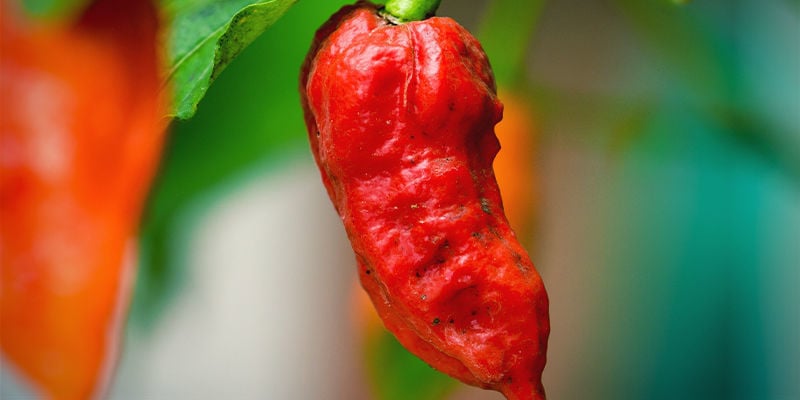
As arguably the most important tip on our list, be sure to select an innately hot variety from the outset, and build from there. It's completely infeasible to cultivate an Anaheim chili and expect it to reach the spicy heights of the ghost pepper or Carolina Reaper. So lay the groundwork by choosing a pepper plant with the right heat level for you, and you simply can't go wrong.
And though we're dishing out tips on how to grow hotter chili pepper plants, that doesn't mean you have to go right for the hottest varieties available. If you enjoy a milder spice but fancy cranking up the heat just slightly, that's entirely possible.
But how do you figure out which peppers are spicier than others? Of course, one way is through trying as many as you can to gauge your preference for flavours and heat.
However, an easier way is to use the Scoville scale. This is a handy system in which every chili is measured in Scoville heat units, or SHU. These units are determined by how many droplets of water are needed to dilute the heat until it cannot be tasted. The scale ranges from the bell pepper (0 SHU) to spicier chilies such as the jalapeño (5000 SHU), all the way to the Carolina Reaper (2.2 million SHU). So take your time to pick out a variety with a SHU that best represents your desire for spice.
Water sparingly
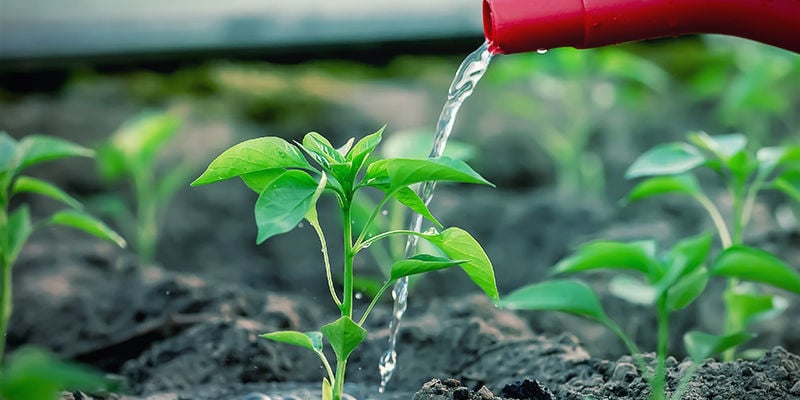
Like when growing cannabis, sometimes we need to inflict a little stress on our plants for them to perform the way we want. One method unique to chilies is to water them sparingly. Simply allow the substrate to dry out completely in between watering cycles. Many growers will even wait until the leaves on the plant begin to droop and look limp before adding more water.
This stress will in turn cause the plant to make the most of the available moisture and put all of its energy into fruit production. Granted, not providing an adequate or consistent watering routine can diminish the weight of your returns a little bit, but what you're left with are hot peppers that have been upped up to their maximum heat level.
Some daredevils "flood-water" their plants after a short drought in order to cause even more stress, but this should only be tried by veterans in this field able to read when a plant has reached its limit.
Keep nitrogen levels high
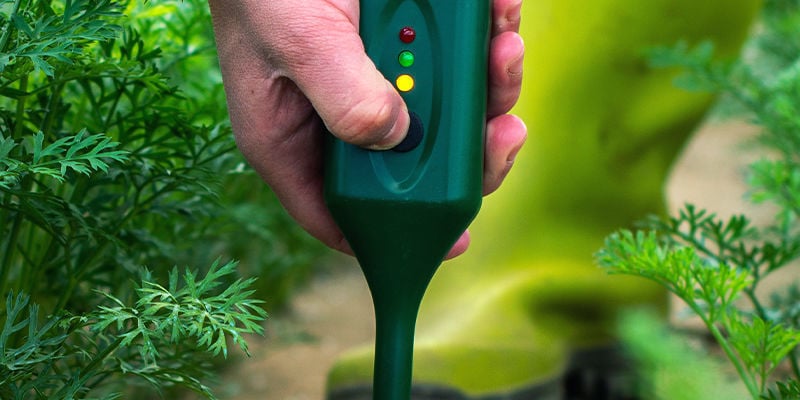
Now, bear with us with this one. While it may sound a little far-fetched, controlling the levels of nitrogen in the soil can actually impact how hot your fruits can become. A recent study by the University of California (Rosenberg, 2018) claims that higher levels of nitrogen will produce hotter berries without adversely impacting yield size. Conversely, the study showed that low nitrogen levels still made for hotter fruits, but the harvest size was greatly affected.
Given the study was conducted in a laboratory setting, how can this be achieved with home growing projects? There are a few different ways. Adding a little manure to the soil will give it a nitrogen boost to really turn up the heat of your peppers. It's also possible to purchase nitrogen-rich compost and even plant food to keep the nitrogen level of your substrate high.
Harvest at the right time
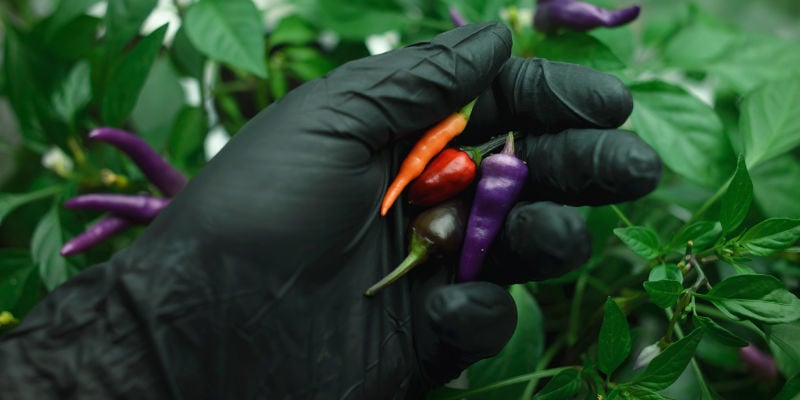
Timing is everything, and harvesting hot peppers is no different. While it's true that you can pick the berries right off the plant as soon as they appear, it's best to wait for some very clear signals that they are ready. Do not fall prey to the common belief that "fully matured chilies provide the most heat and flavour". In reality, a chili reaches its utmost spiciness when it stops growing in size—following this, the capsaicin level will first undergo a sharp decrease, and then a more gradual decrease.
Testing three types of chili varieties widely used in Mexico, it was shown that capsaicin levels in habanero and de arbol reached their peak at days 45–50 from fruit set, and after 40 days in piquin varieties. After that point, capsaicin levels declined (Contreras-Padilla & Yahia, 1998).
Contrary to this, a test on serrano chilies found no change in capsaicin levels during ripening from the green to yellow and red stage (Rocha-Herrera, 1997).
However, if you want more flavour alongside the spiciness, give your chilies a little more time.
Maintain a warm climate at night
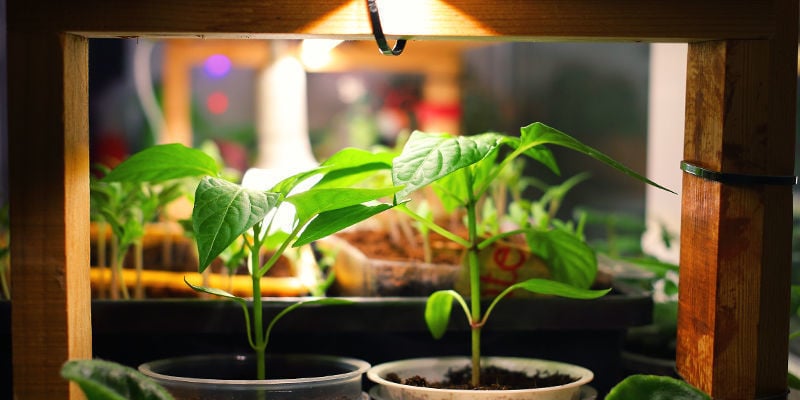
It's certainly no secret that chili plants flourish in a sunny and warm environment; and while this is easy to achieve during the daytime, many neglect this factor in the evenings. So regardless of what kind of climate you live in, or whether you're growing indoors or outdoors, they'll need a consistent level of heat to perform at their best.
Achieving this can be as easy as leaving your plants in direct sunlight during the day and then providing additional heat with a heat mat in the evenings. Your pepper plants will continue to grow through the night, and actually have the potential to produce more capsaicin, resulting in—you guessed it—hotter peppers. For outdoor growing projects, you can place them in a small greenhouse or hoop house.
What to avoid if you want hotter chili peppers
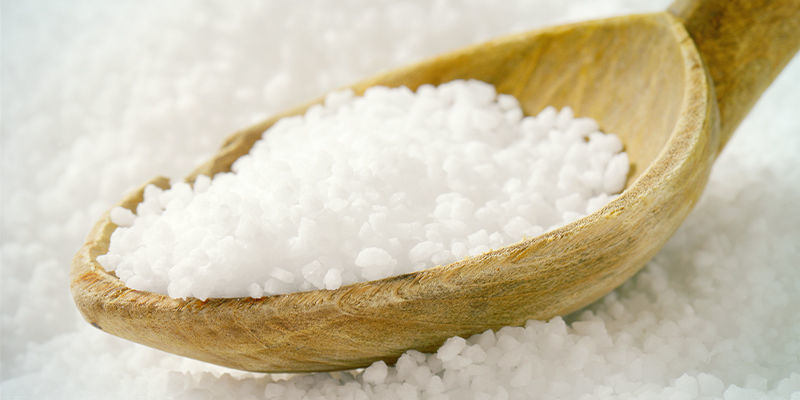
Now that we’ve covered the tried and tested tips to achieve super-hot chilies, it’s time to dispel some myths. If you continue your search on how to achieve the hottest peppers, you’re likely to come across some unfounded and untested claims. Some methods of note include adding Epsom salt to your plants, cross-pollination by sweet peppers, and adding sulphur to the planting hole. All are surefire ways for your peppers to lose potency, and can potentially have an adverse impact on the plant itself.
In isolated cases, you may find that these tips have helped some growing projects. However, the evidence is pretty limited. So if you're looking to try them, do so at your own risk. With that said, by sticking to the tips mentioned above, you can grow hotter peppers with confidence!
- Margarita Contreras-Padilla, & and Elhadi M. Yahia. (1997). The Evolution of Capsaicinoids during Fruit Development of Three Varieties of Hot Peppers - https://www.researchgate.net
- Rocha-Herrera, & A. R. (1997). Influence of solvent extraction, maturity stage, and thermal treatment on the determination of capsaicin in capsicums {Capsicum armuum spp.) and their products (UMI Number; 9737753). UMI. - https://dr.lib.iastate.edu
- Rosenberg, & A. (2018, September 18). Spicy science: Producing hotter peppers. University of California. Retrieved January 11, 2022 - https://www.universityofcalifornia.edu
-
 5 min
24 January 2022
When And How To Harvest Hot Peppers
You've taken the time to cultivate hot peppers, giving them everything they need to flourish throughout their growing cycle. Yet, arguably the most critical moment is fast approaching; when and how...
5 min
24 January 2022
When And How To Harvest Hot Peppers
You've taken the time to cultivate hot peppers, giving them everything they need to flourish throughout their growing cycle. Yet, arguably the most critical moment is fast approaching; when and how...
-
 6 min
5 October 2021
Top 20 hottest peppers in the world (2025 edition)
Think you can handle the heat? Discover the 20 hottest peppers of 2025, from record-breaking Pepper X to legendary Carolina Reaper and Scotch Bonnet. Explore fiery heat levels, unique flavours, and...
6 min
5 October 2021
Top 20 hottest peppers in the world (2025 edition)
Think you can handle the heat? Discover the 20 hottest peppers of 2025, from record-breaking Pepper X to legendary Carolina Reaper and Scotch Bonnet. Explore fiery heat levels, unique flavours, and...
-
 7 min
6 September 2021
Jalapeño Pepper: How To Grow And Use
While not as mind-blowingly hot as, say, the ghost pepper or habanero, there's still plenty to love about the jalapeño. It's arguably many people's first step into the world of spicy foods, but did...
7 min
6 September 2021
Jalapeño Pepper: How To Grow And Use
While not as mind-blowingly hot as, say, the ghost pepper or habanero, there's still plenty to love about the jalapeño. It's arguably many people's first step into the world of spicy foods, but did...
-
 7 min
12 August 2021
Growing Peppers For Beginners In 10 Easy Steps
Growing peppers at home can be a hugely rewarding task. Harvesting your own carefully cultivated chilies to use in cooking is a great feeling. But, from seed to harvest, how do you achieve this?...
7 min
12 August 2021
Growing Peppers For Beginners In 10 Easy Steps
Growing peppers at home can be a hugely rewarding task. Harvesting your own carefully cultivated chilies to use in cooking is a great feeling. But, from seed to harvest, how do you achieve this?...







 United States
United States











